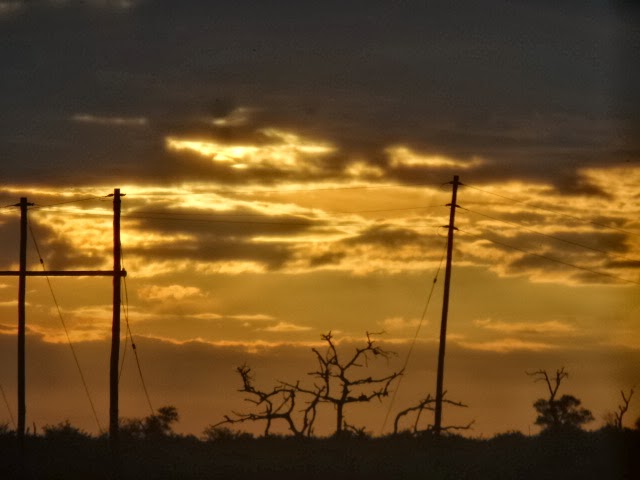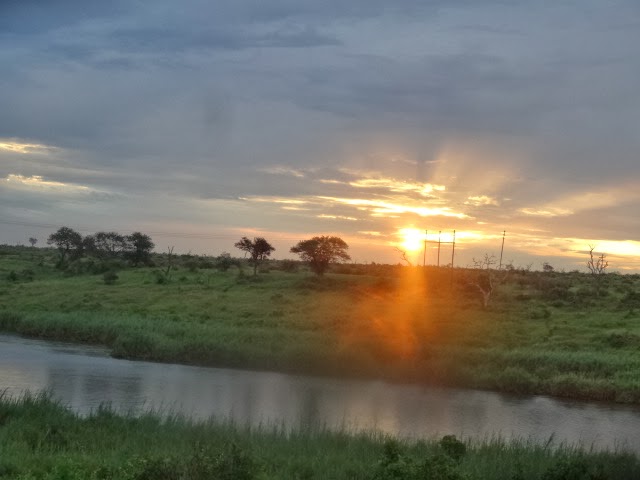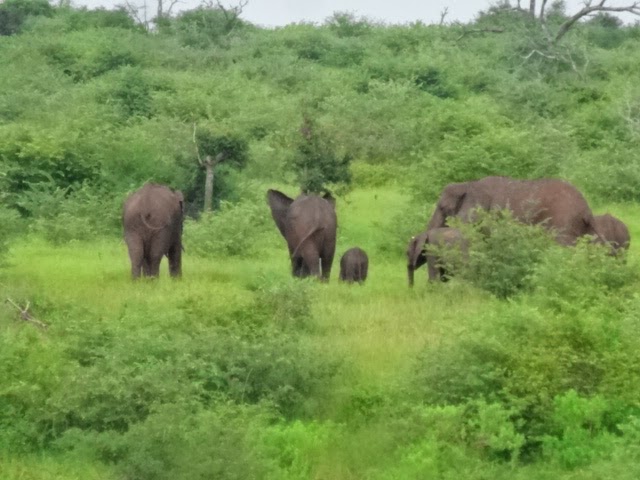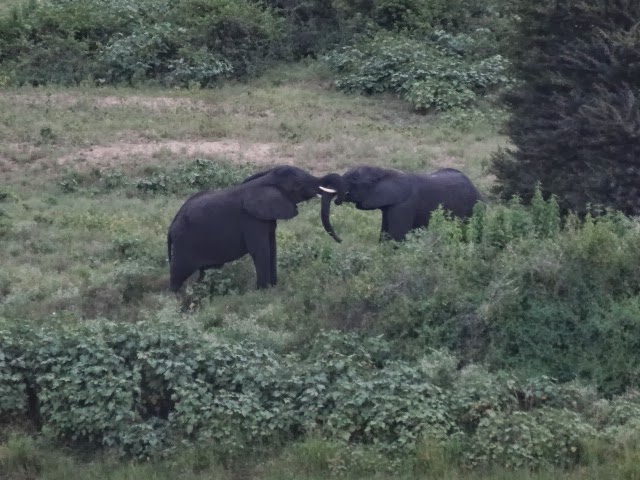 |
Sunset over the Crocodile River in Kruger National Park. The power lines have become a necessary addition to the tremendous amount of security and tourism, a mainstay of survival of this massive wildlife area. This photo was taken from the veranda of our pleasing accommodations at the Crocodile Bridge Safari Camp where we slept in a tent last night.
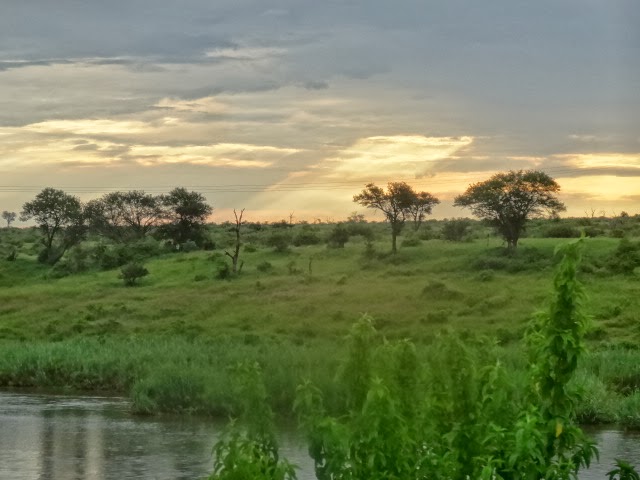 Wow! This unbelievable ray of light captured our attention. Sunsets in Africa have been out of this world!
|
The thought of spending a night away from the African Reunion House so close to leaving for Morocco, with the packing hanging over our heads, didn’t appeal to us at first. But, when Louise and Danie had taken the time to arrange this complimentary overnight stay for us in a tent at the Crocodile Bridge Safari Lodge, we could hardly refuse.
 |
| Although the walls of our accommodations had tent material on three sides, it was made to appear as a cottage. The veranda is on the opposite side within feet of the electrified fence to Kruger National Park, keeping tourists safe from the big game. Allen and Scott showed us a video of elephants that had come directly up to the fence. |

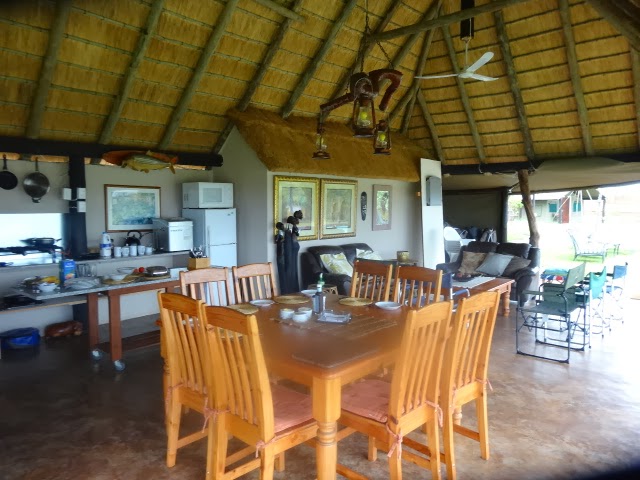 |
| The communal dining, bar and entertainment areas. Bed and breakfast options were available for a small additional fee. We had perfect mushroom and onion omelets with “streaky” bacon this morning, a real treat! |
 |
| See the entire African Tulip Tree with more of these blossoms below. |
 |
| Beautiful vegetation is abundant along the banks of the Crocodile River, some, natural to the area, others imported over the years by foreign property owners. |
Perhaps, in a way, our 19 hours at the camp is a perfect way to wind down our time in South Africa while sleeping in a tent with AC (which we didn’t need to use), with a comfortable bed and an almost-outdoor shower. Add the divine pleasure of listening to the sounds of one of the largest natural bird sanctuaries in the world and the bubbling hum of the hippos only enhanced the richness of our experience.
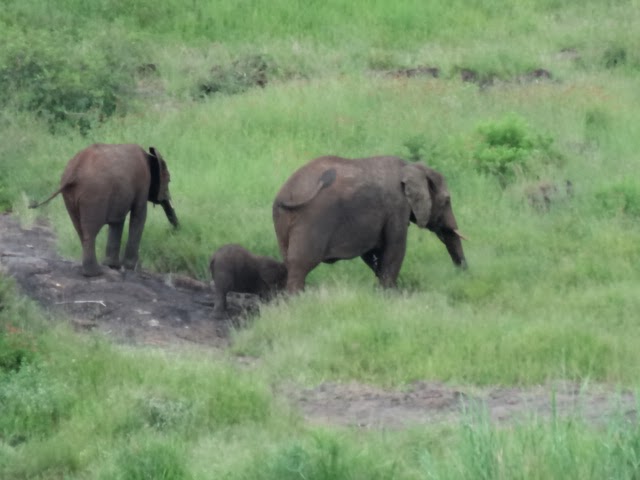 |
| Scott explained that last Tuesday over an extended period they heard the cries of this mother elephant as she gave birth. Over the next few days, they saw this baby. By far, this was the tiniest baby elephant we’ve seen in all of our travels. |
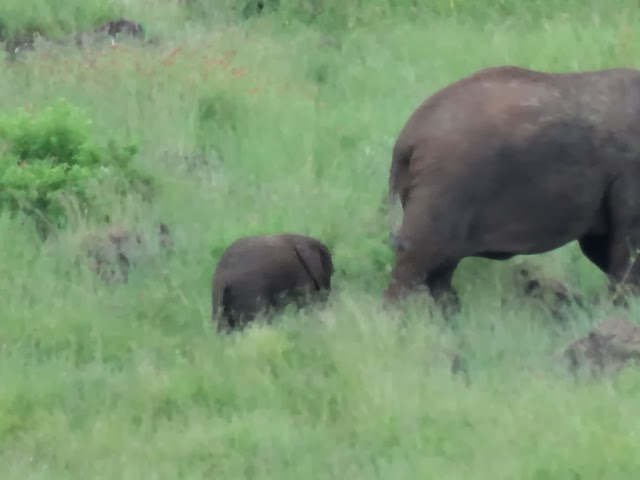 |
| Our camera doesn’t have a powerful enough zoom for a clearer photo from this range with its 20X Zoom. In the next few weeks, we’ll be purchasing a new camera after testing Allen’s powerful and lightweight 50x Zoom. Most likely, we’ll make the purchase and have it shipped to us while we’re in Morocco. |
Louise dropped us off at the Crocodile Bridge Safari Lodge late yesterday afternoon, on the absolute hottest day we’ve experienced in South Africa. The sky was rapidly shifting as ominous-looking clouds wafted in. We needed rain and we needed it fast to defray the scorching heat and uncomfortable humidity.
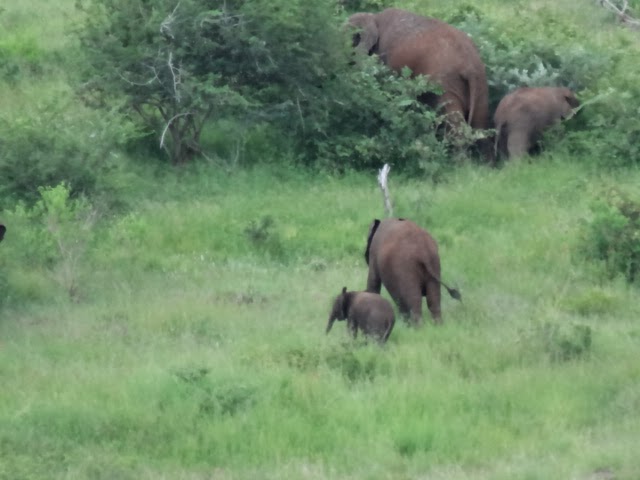 |
| So sweet. |
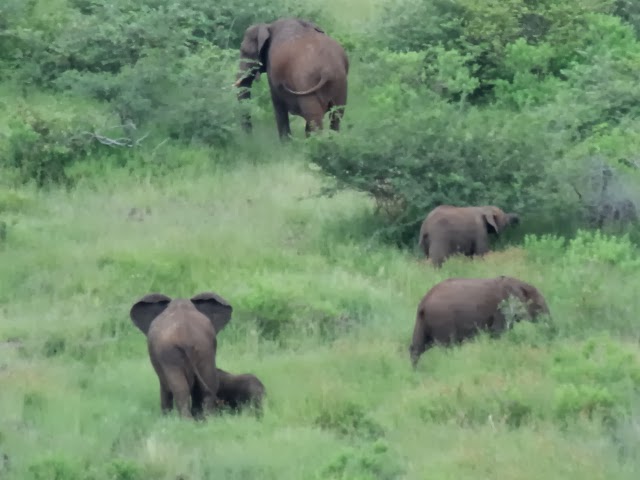 |
| The baby nursing. Check out the gigantic size of the matriarch of this family in comparison to the younger females. She may be the grandmother of the baby. Females only give birth once every five years with a gestation period of 22 months. The calf begins to nurse at birth and may continue to nurse for up to two years.
|
Allen and Scott, the co-owners warmly greeted us and helped us get situated in the clean, comfortable tent which is more like a cabin than a tent with it own veranda situated well above the ground providing expansive views of the riverbank.
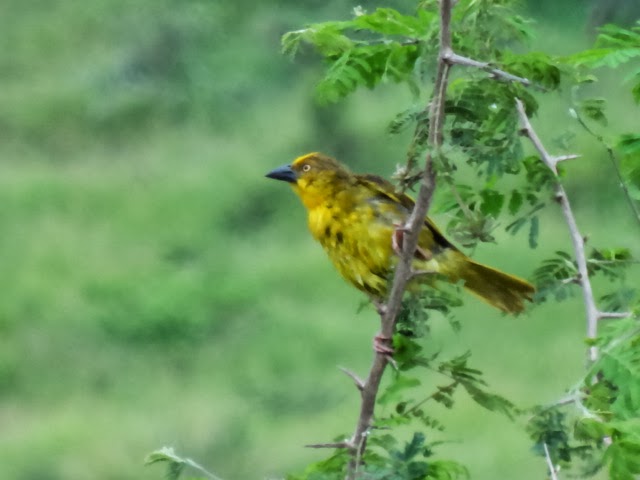
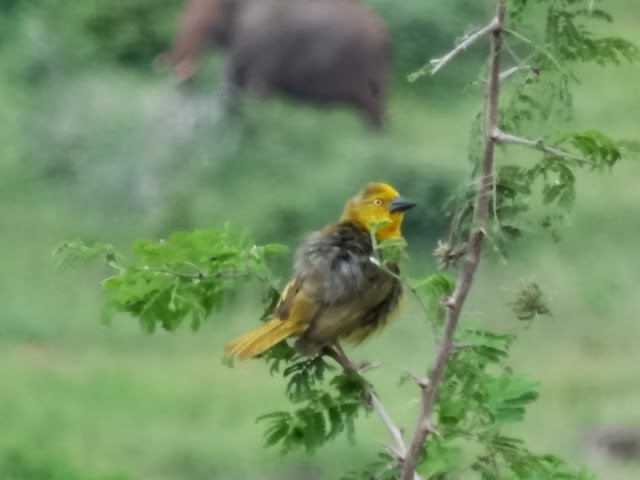 |
| This appears to be the same bird as above with more fluffy gray feathers. Note the elephant in the background of this photo.
|
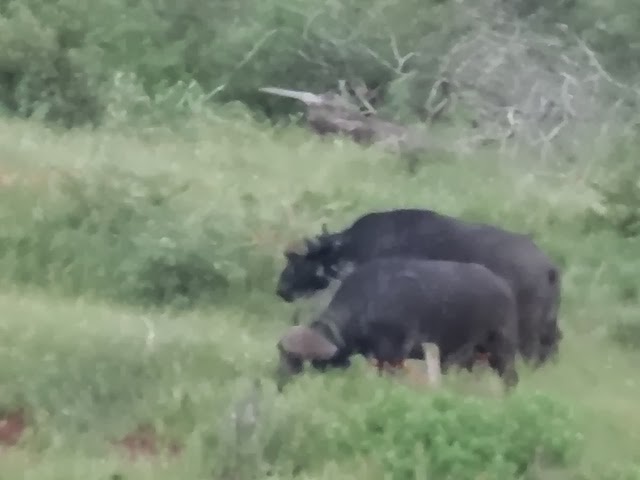 |
| Cape buffalo from afar. |
Then, “safari luck” kicked in, as it often does as we spent the next few hours with our eyes glued to the river bank as evidenced in these photos. In no time at all the wind picked up and with it came a cool breeze and rain. Relief. t only rained for a short period, leaving behind a cool evening which we spent at the communal lounge/kitchen area, a short walk from our tent with both owners and their lovely wives, Caron and Michelle.
The Crocodile Bridge Safari Lodge is intended to be self-catered, but, last night as their dinner guests they prepared a well rounded and delicious meal, paying special attention to my dietary needs.
The evening flew by as the eight of us, including another South Africa couple, Amy and Dudley, engaged in lively and animated conversation well into the evening. What’s with South African people being so kind and such fun? We’re grateful to have encountered this amazing level of warmth and hospitality over these past three months.
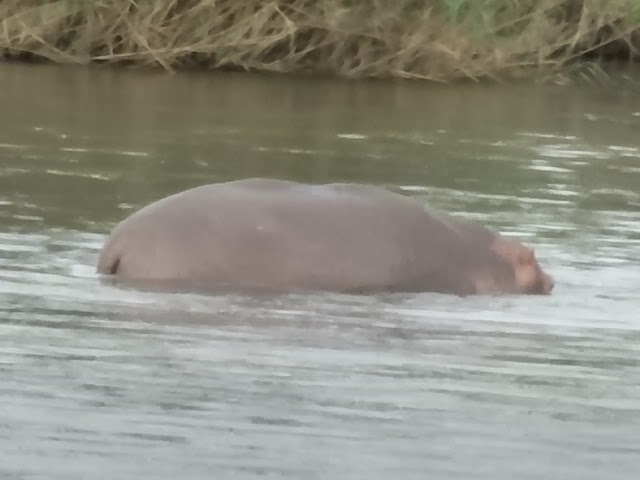 |
| Hippos lined the river frequently making their pleasing sounds. |
Awakening after a comfortable, albeit, short night’s sleep, to the sound of the hippos at 5:30 am, we could hardly wait to get outside. The morning in Kruger National Park had begun. As light filtered through the clouds, we could see the Crocodile Bridge at a short distance, where we had entered the park on numerous occasions over the past three months.
We were in fact amidst the wild animals lurking along the river’s edge protected by an electrified fence as is common in areas where humans and wildlife intermingle. South Africa and the park boards are diligent about avoiding life threatening injuries or death from attacks to humans from predatory animals in the wild.
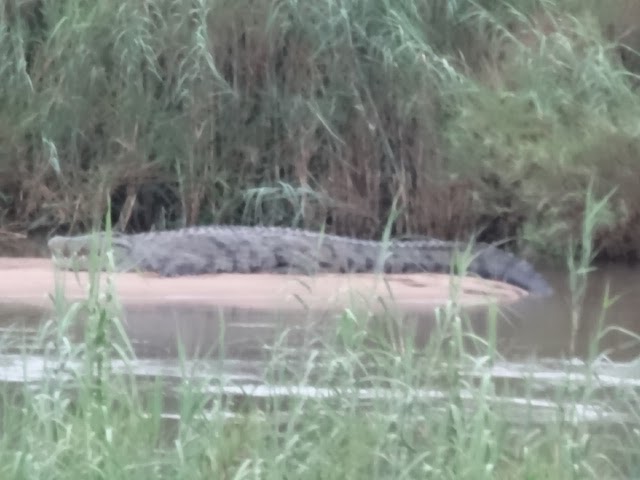 |
| Tom’s good eye spotted this large crocodile lounging on a sandbar. |
The accommodations were more appealing than one might expect from a moderately priced tented camp. All of the common hotel amenities were in place: soaps, bottled water, ample fluffy white towels, quality bedding, a power strip for electronics, and soft lighting for night reading.
It is an ideal location for nature lovers, interested in river viewing, safari walks, bush braais, and game drives in Kruger National Park. The close proximity to grocery shopping and restaurants made this an easy location.
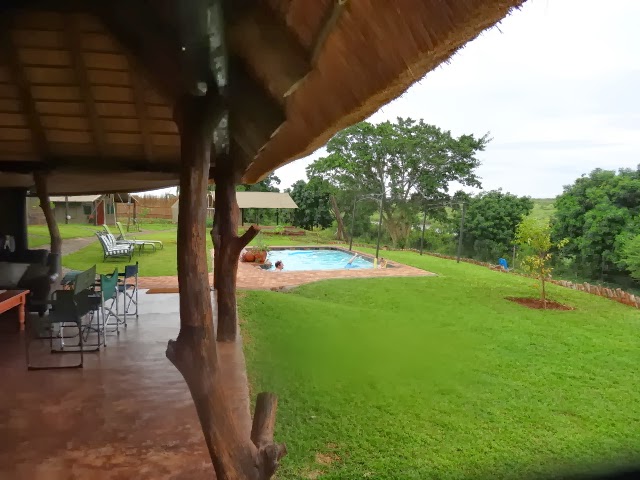 |
| View to the pool from the communal dining area. |
The singing of numerous bird species was practically ear splitting at times, causing us to laugh. Nature at its finest. We couldn’t have enjoyed it more.
After our hosts served us a delicious hot breakfast, and after engaging in more interesting travel conversations (South Africans are well traveled), we were ready to return to the African Reunion House to begin the looming task of packing for the next leg of our journey.
 |
| Our hosts explained that this little bird or one similar hangs out in this area on the grounds of the lodge on a regular basis. |
Two days until we depart. Two days remaining in what has been a heavenly experience. Two days until another chapter in the lives of two crazy seniors who left everything behind to see the world. Two days, then on to the rest of our lives, that after only 16 months, has only just begun…

